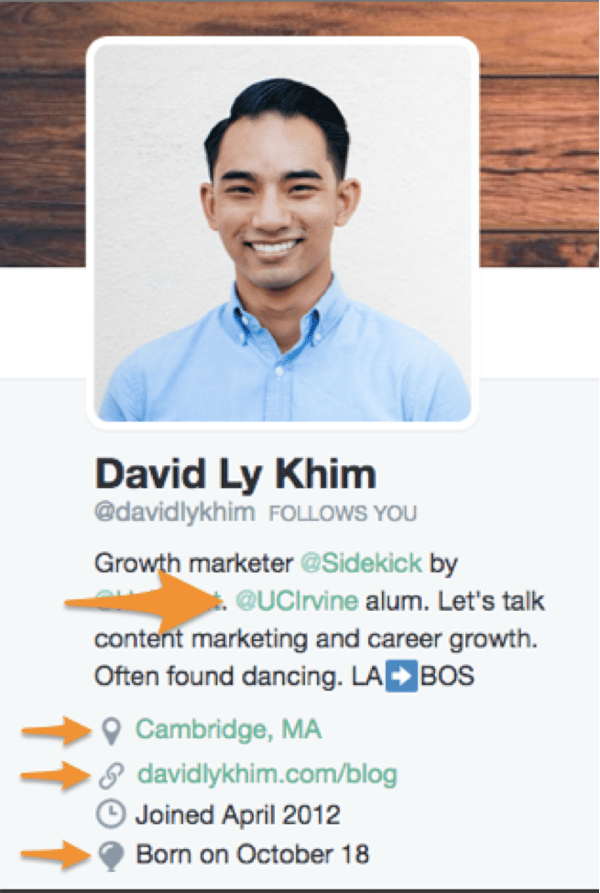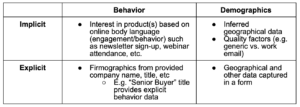I didn’t like numbers at all growing up. Math was my least favorite subject and science was a close second.
But, inevitably, the older I got, the more I valued the two subjects. In fact, nowadays, every decision I make is influenced by numbers. For example, I only buy plane tickets on Sundays and fly on Tuesdays. (Thanks, science!)
With this in mind, it wasn’t a surprise to me to learn that top sales reps use data to drive their strategies and choices. What was surprising is how many aren’t taking advantage of the scores of freely available data at their fingertips.
Do you feel that your sales strategy could benefit from an injection of data? If so, it’s your lucky day. Here are four prospecting tips, backed by data.
1) Timing is everything.
The average buyer receives over 100 emails a day, opens just 23% and clicks on just 2% of those emails, according to Tellwise. With those odds, it’s going to take a lot to make an impact on a prospect.
The data says:
- The best times to email prospects are 8 am and 5 pm, according to Get Response.
- Tuesday emails have the highest open rate compared to other weekdays, says Experian.
- If a salesperson sends an email Tuesday morning, the best days to call and follow up are Wednesdays and Thursdays from 6:45 am – 9 am and 4 pm – 6 pm. The worst days to call are Mondays from 6 am to noon and Fridays in the afternoon, according to a study from RingLead.
Here’s how to use these statistics to your advantage in the context of a sales outreach campaign.
Step 1: Write the copy, and save it as a canned response.
By utilizing canned responses, salespeople can easily personalize their emails before sending. With templates built, reps can then tailor a few key areas to improve the chances the prospect will open and respond. (Psst: Here’s how to create a canned response in Gmail.)
For instance, include something personal in each email, such as the buyer’s name. Personalized emails improve clickthrough rates by 14%, and conversion rates by as much as 10%, the Aberdeen Group found. In addition, Retention Science found that subject lines with the recipient’s first name also have higher open rates.
Step 2: Schedule the emails.
Instead of having to save all of these emails as drafts in my inbox and do a major email dump on Tuesday morning, I use sales automation to schedule them to go out at the right time. It’s an easy way to wrap up the day and not have to worry about sending 100 emails when I get to the office.
Scheduling with HubSpot Sales Hub works like this:
I now have personalized emails set to arrive in my prospects’ inbox at 8am on Tuesday morning, improving the chances these prospects open and read what I’ve sent.
2) Establish trust.
Here’s a reality check: 90% of companies report they will only buy from organizations they trust.
We enter the world hardwired for social connections, and we’re more likely to trust someone who is similar to us in some dimension. That’s why establishing a connection is so important.
The data says:
- 83% of consumers are comfortable making a referral after a positive experience, Texas Tech University found.
- Vorsight found that sales reps are 70% more likely to get an appointment on an unexpected sale if you join LinkedIn Groups.
- Customers are 4x more likely to buy when referred by a friend, according to Nielsen.
Establishing a connection starts with doing the research. Find your buyers on LinkedIn, Twitter, and any industry-specific social groups well before you reach out so you get a general idea of who you’re emailing.
I spoke with two top salespeople last week who identified these three things to look for:
- Where the prospect went to college
- Where they grew up
- The topic of their personal blog (if applicable)
All of this information and more is readily available on buyers’ profiles. And these tidbits provide an easy way to start a conversation.

3) Send helpful content.
Ninety-five percent of buyers chose a solution from a company that “provided them with ample content to help navigate through each stage of the buying process,” DemandGen Report discovered in a study.
As a content marketer, I’m a little biased here. But I do believe having ample content is important to the sales process.
The data says:
- 57% of the journey is completed before the buyer talks to sales, according to Corporate Executive Board.
- iMedia connection found 68% of buyers feel more positive about a brand after consuming content from it.
- 82% of buyers viewed at least five pieces of content from the winning vendor, according to Forrester.
In terms of using content in sales, the most important thing to remember is to gather and disseminate story-driven content. Having story-driven blog posts, infographics, and testimonials at the ready to prove your product’s results is huge. Dan and Chip Heath found that 63% of sales presentation attendees remember stories, but only 5% remember statistics.
By sending along relevant client case studies, prospects can discover for themselves how a customer went from problem to results with the right product.
4) Stay persistent.
Salespeople quit too quickly. Forty-four percent give up after one follow-up, according to Scripted.
Unfortunately, humans are wired to look for immediate results when we take on a new task. Whether it’s getting in shape, saving money, or making prospecting calls, we want to see progress right away.
In the likely event we don’t hear back from a prospect immediately, the key is to send a follow up note. The data says:
- 80% of sales require five follow-up phone calls after the meeting, according to The Marketing Donut.
- Inside Sales found that web leads followed up within five minutes are nine times more likely to convert.
- The average salesperson only makes two attempts to reach a prospect, according to Sirius Decisions.
- In a study, Lap Job found that only 2% of cold calls result in an appointment.
- 93% of converted leads are contacted on the sixth call attempt, according to Velocify.
There’s only one step to staying persistent, and that’s following up! Track where each prospect is in the funnel, and stick to a consistent follow up cadence. Keep a schedule of when the next email or call should go out so valuable prospects don’t slip through the cracks.
What was once considered a career about technique and style has become data- and science-driven. Taking someone from a prospect to a customer is a skill that can be taught, learned, and iterated.
Editor’s note: This post was originally published in October 2015 and has been updated for comprehensiveness.
![]()


